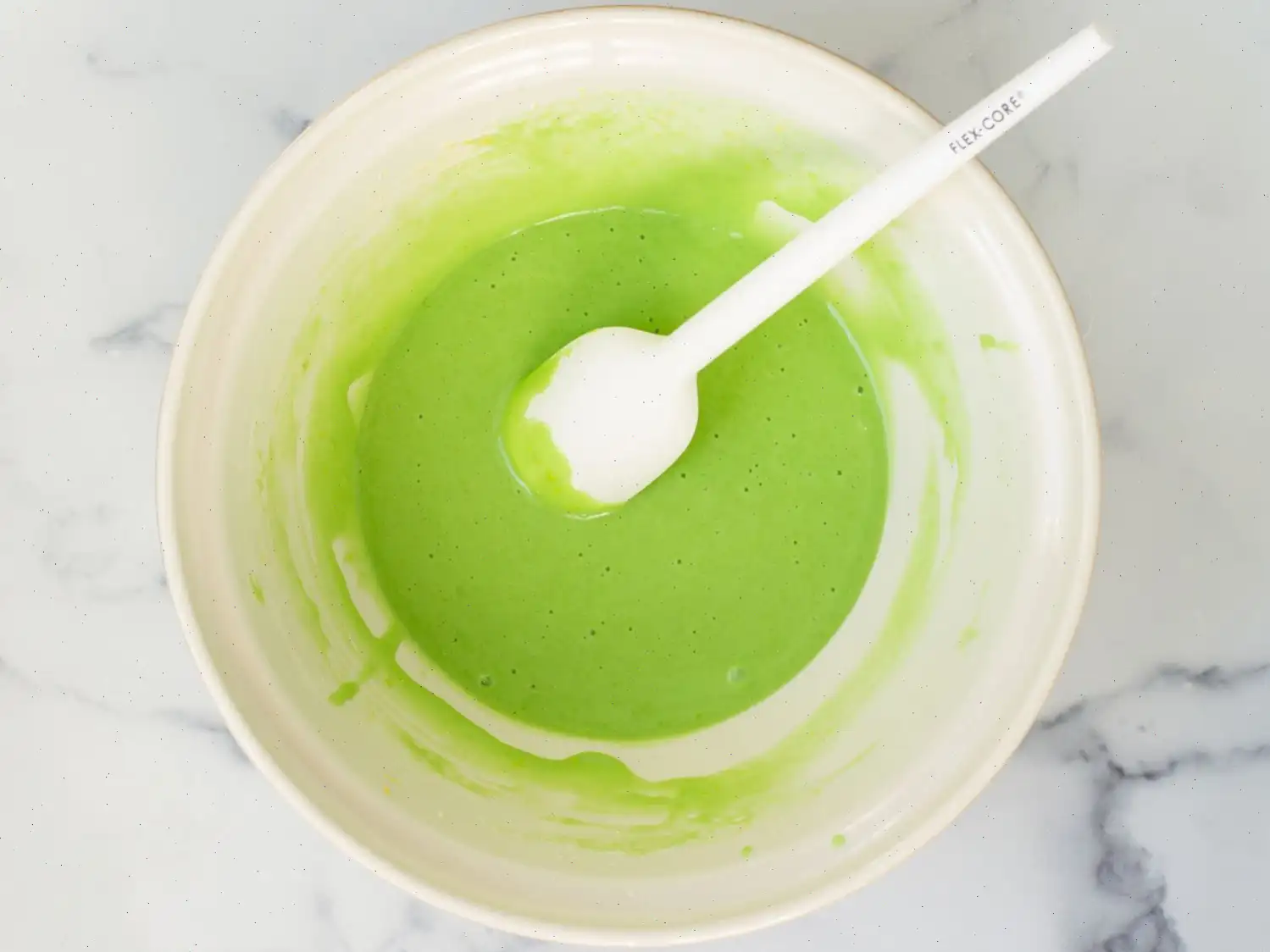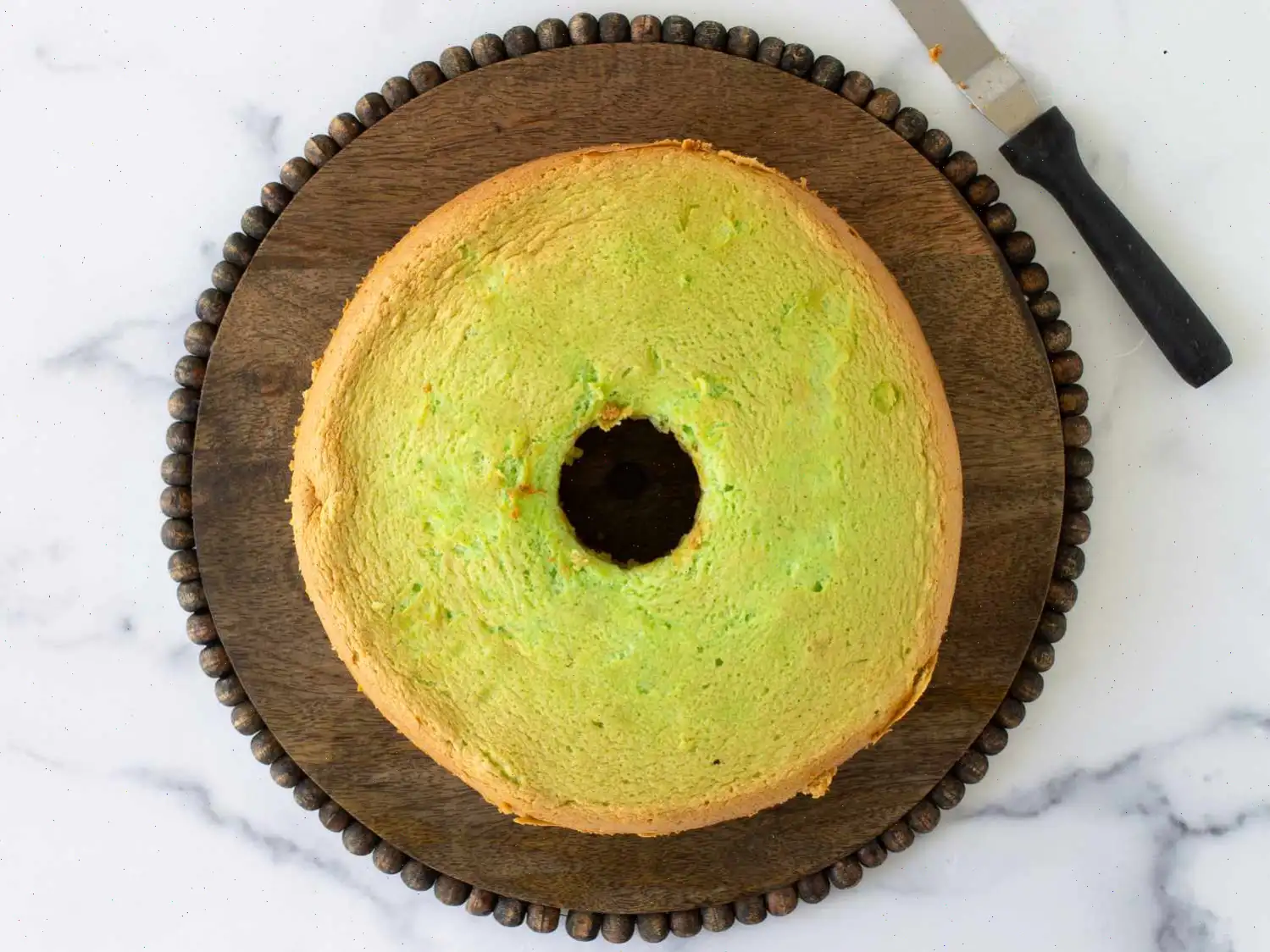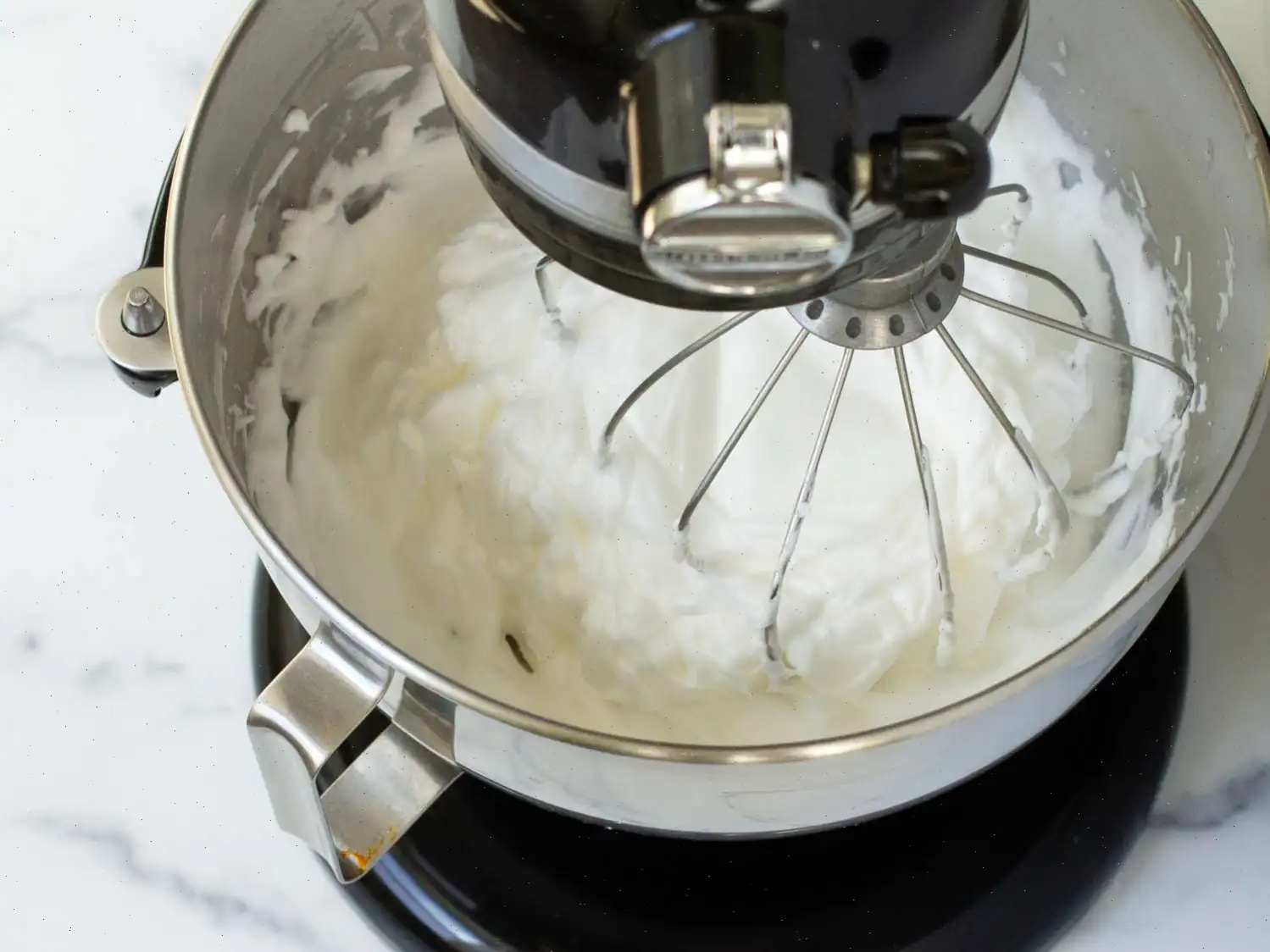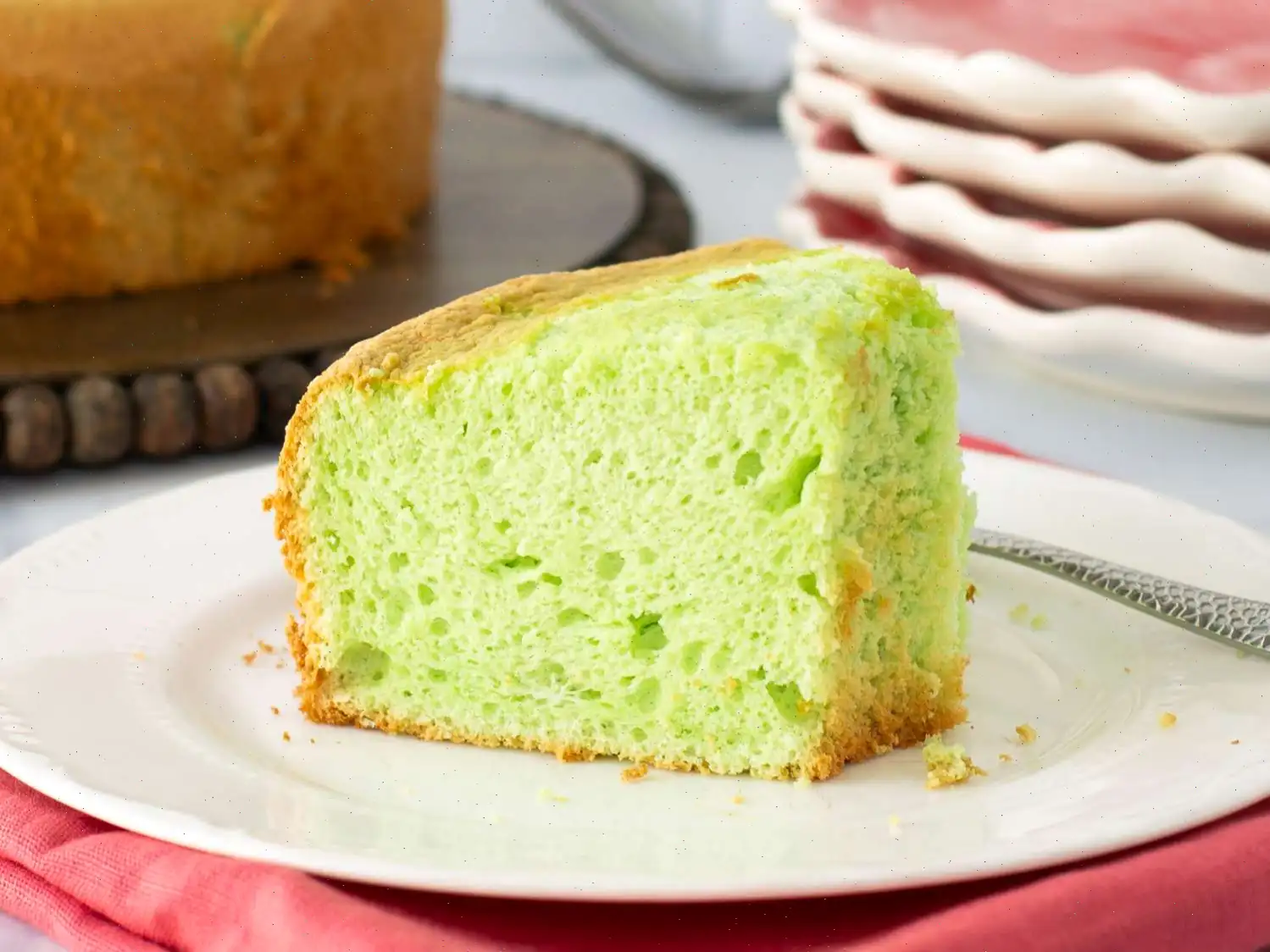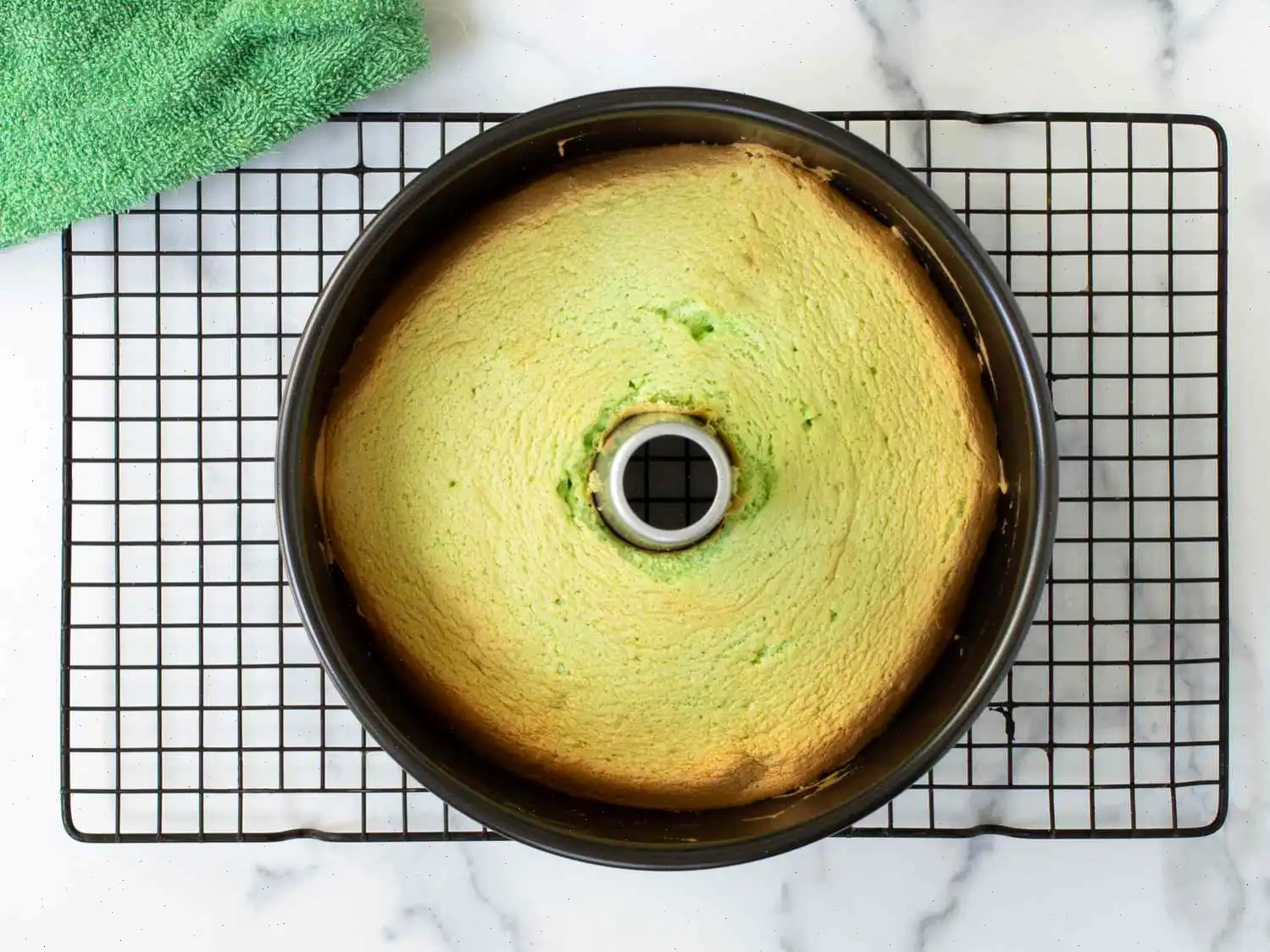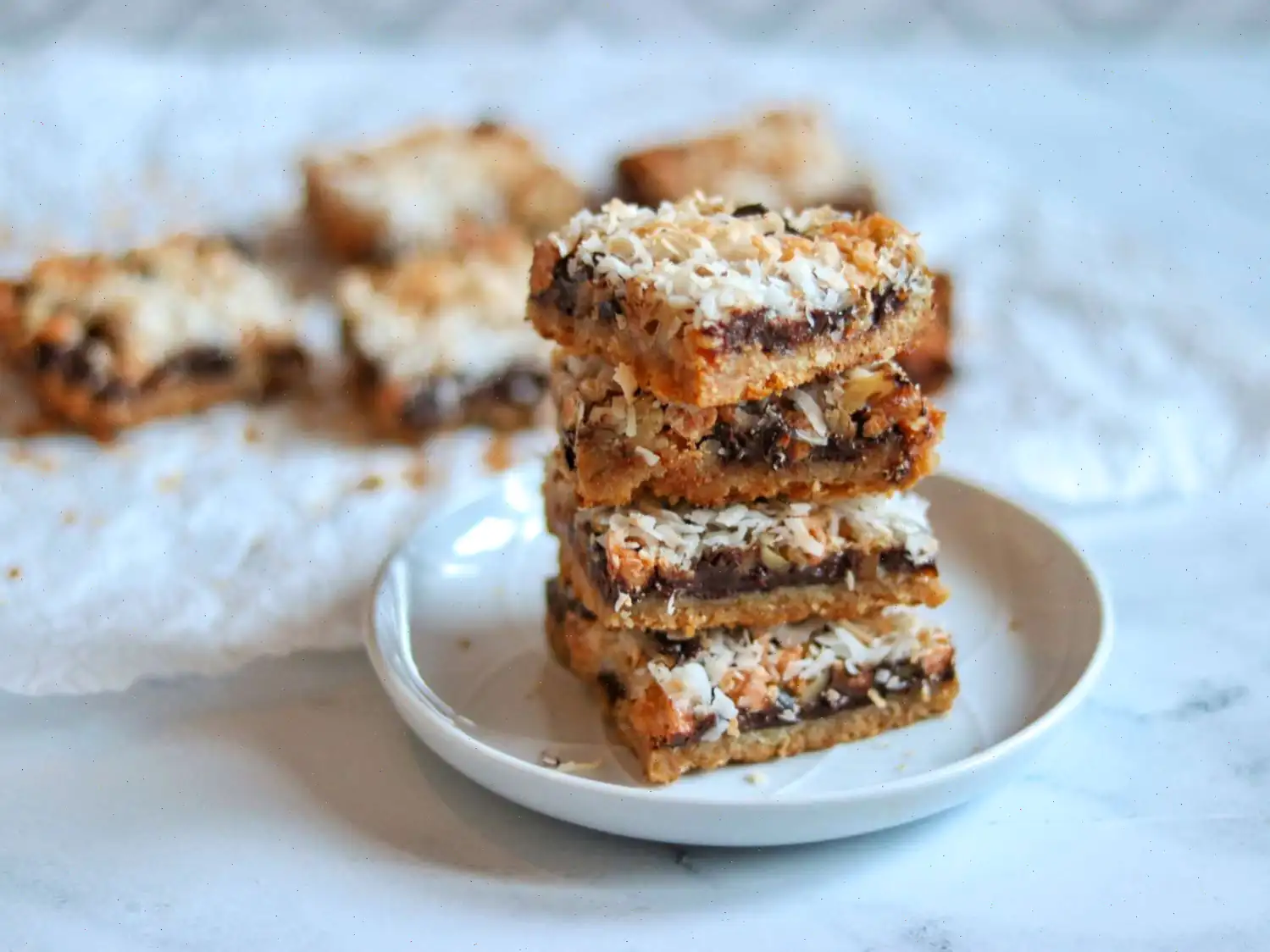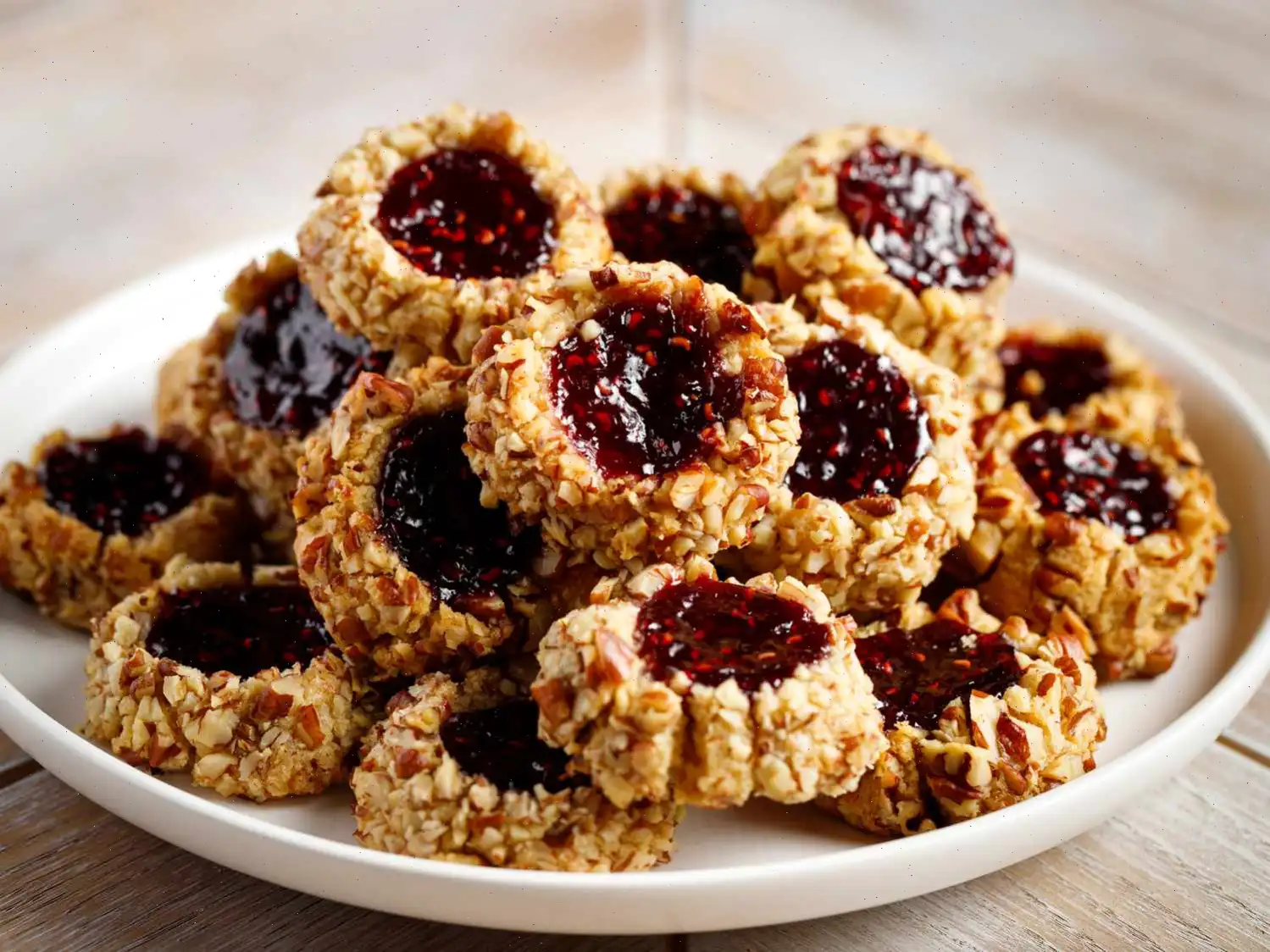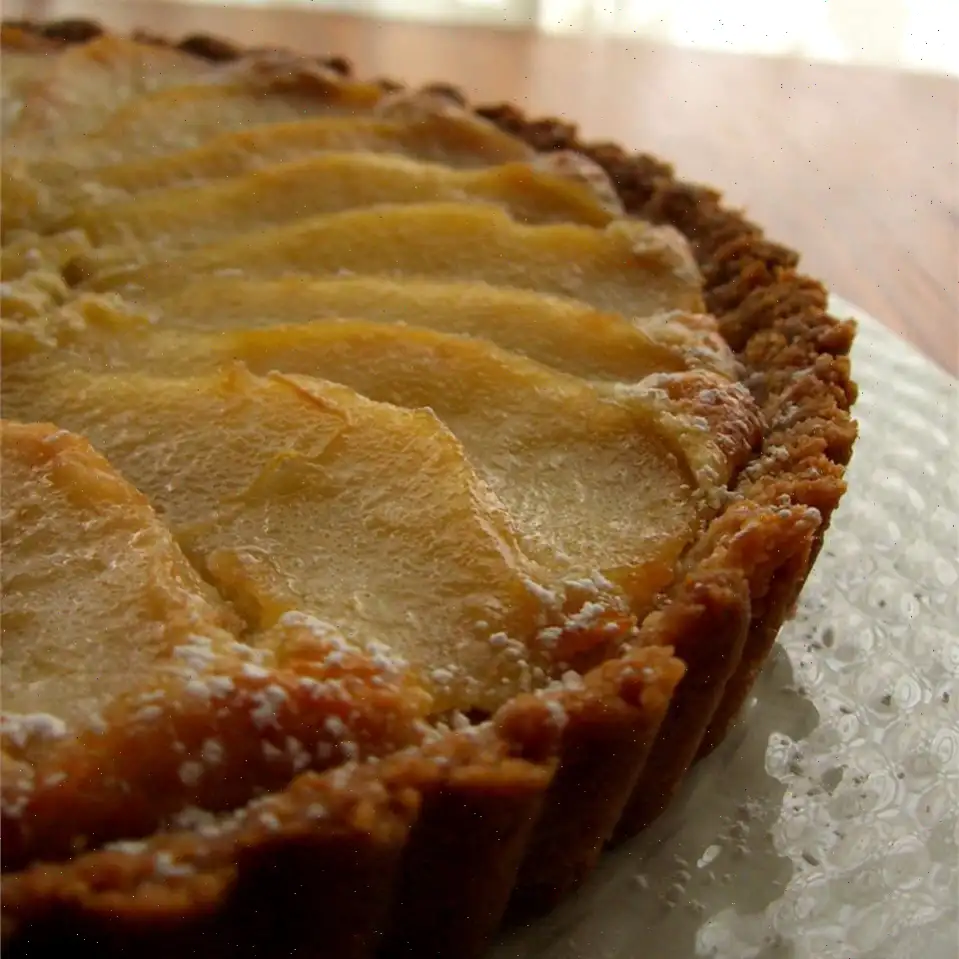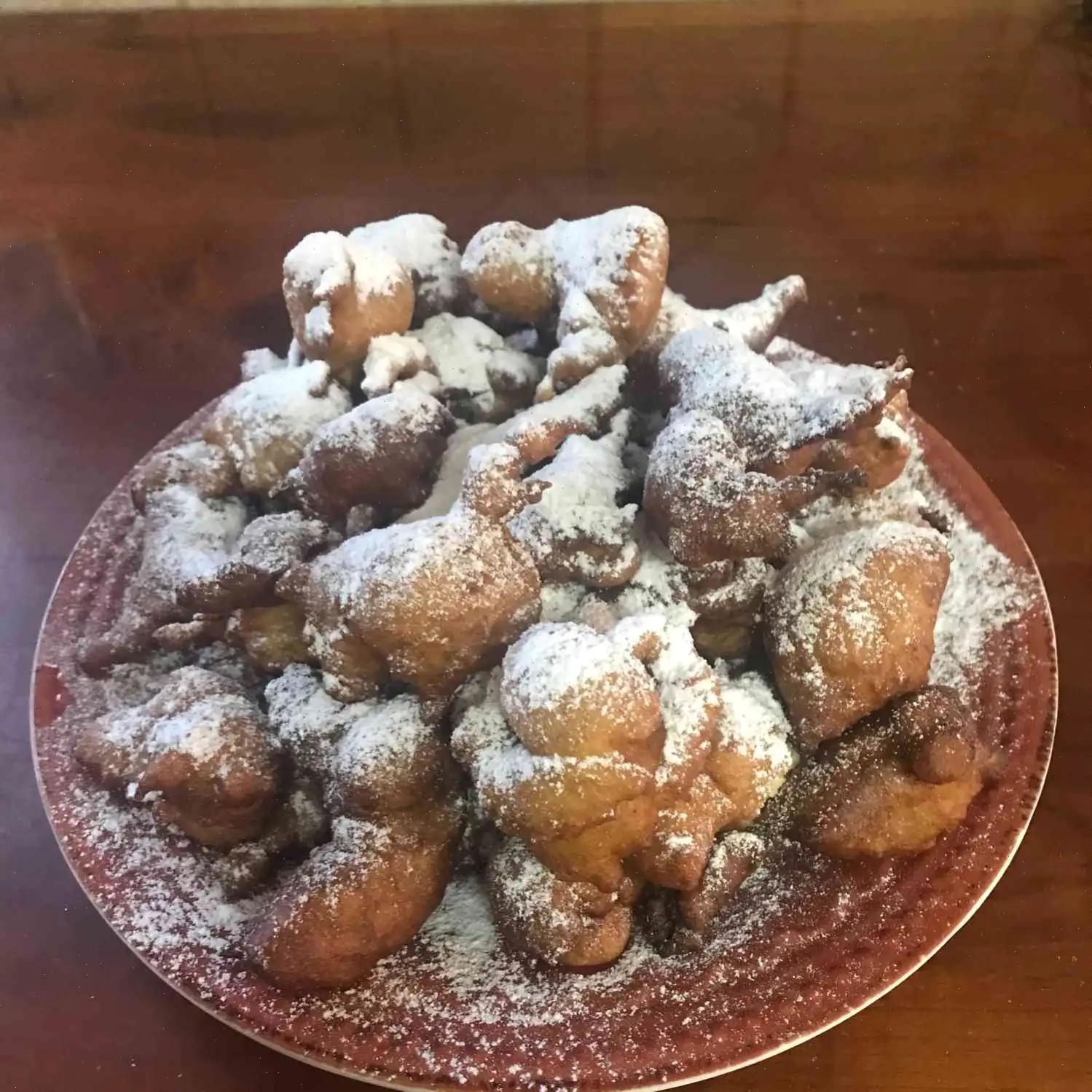
Pandan Chiffon Cake Recipe
Ingredients
This recipe was developed at its original yield. Ingredient amounts are automatically adjusted, but cooking times and steps remain unchanged. Note that not all recipes scale perfectly.
- 6 large eggs, separated
- teaspoon cream of tartar
- cup white sugar
- cup water
- teaspoon pandan paste
- 5 tablespoons corn oil
- 1 cup self-rising flour, sifted
Directions
Step 1: Gather all ingredients and preheat the oven to 325F (165C).
Step 2: Beat the egg whites and cream of tartar in the bowl of a stand mixer fitted with the whisk attachment until stiff peaks form. Set aside.
Step 3: In a separate bowl, beat the egg yolks and sugar together until the sugar dissolves.
Step 4: In another bowl, whisk the water and pandan paste together until smooth. Stir this mixture into the egg yolk mixture.
Step 5: Stir in the corn oil and then fold in the sifted self-rising flour.
Step 6: Gently fold the egg yolk-pandan mixture into the egg whites with a spatula. Be careful not to deflate the egg whites.
Step 7: Pour the batter into a 9-inch chiffon cake mold.
Step 8: Bake in the preheated oven for 45 to 50 minutes, or until a toothpick inserted into the center of the cake comes out clean.
Step 9: Once baked, cool the cake in the pan, inverted onto a wire rack.
Step 10: After the cake has cooled, run a sharp knife around the edges to loosen it from the mold. Carefully invert the cake onto a serving plate.
Cook's Note
You can use pandan extract instead of pandan paste for a different flavor profile.
Nutrition Facts (per serving)
| Calories | 227 |
| Total Fat | 12g (15%) |
| Saturated Fat | 2g (11%) |
| Cholesterol | 123mg (41%) |
| Sodium | 245mg (11%) |
| Total Carbohydrate | 24g (9%) |
| Dietary Fiber | 0g (1%) |
| Total Sugars | 13g |
| Protein | 6g (11%) |
| Calcium | 71mg (5%) |
| Iron | 1mg (7%) |
| Potassium | 80mg (2%) |
Percent Daily Values are based on a 2,000 calorie diet. Your daily values may be higher or lower depending on your calorie needs.
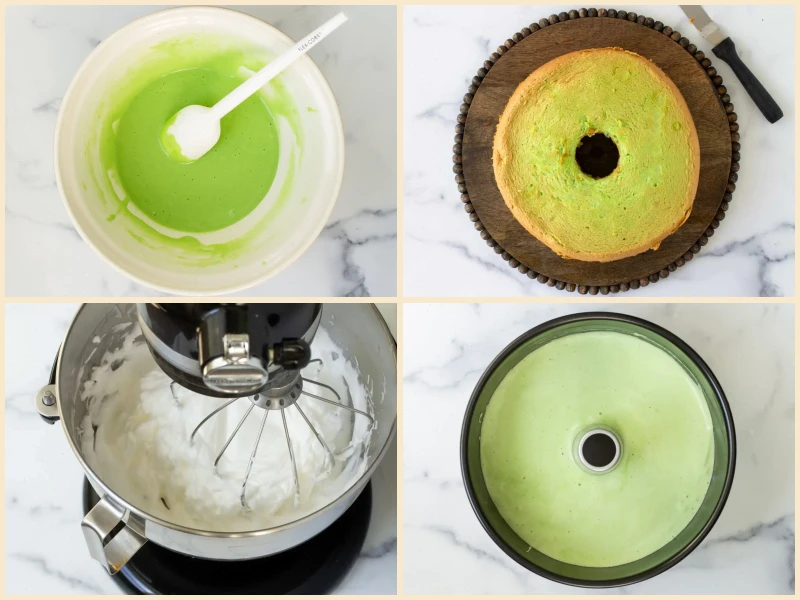

The Pandan Chiffon Cake is a light, airy, and flavorful dessert hailing from Southeast Asia. Its delicate green color and unique aroma come from pandan paste, a natural extract derived from the pandan leaf, which is widely used in Southeast Asian cuisine. This cake combines a soft chiffon texture with the sweet, floral, and slightly nutty taste of pandan, making it a standout among other cakes.
History and Origins
The origin of pandan chiffon cake can be traced back to Southeast Asia, particularly to countries like Malaysia and Singapore. Pandan leaves have long been a staple in the regions cooking, used for flavoring rice, desserts, and even savory dishes. The chiffon cake itself, which has a light, airy texture achieved through the use of whipped egg whites, was first created in the 1920s in the United States. Over time, this cake was adapted in Southeast Asia to incorporate local ingredients such as pandan, which quickly became a beloved flavor.
Regional Variations
In Southeast Asia, pandan chiffon cake is enjoyed across multiple countries, including Malaysia, Singapore, Thailand, and Indonesia. Each region may have slight variations in the recipe depending on the availability of ingredients or regional preferences. For example, in Malaysia, pandan leaves are sometimes used fresh instead of pandan paste, which gives the cake an even more authentic flavor. In other areas, the cake may be served with a drizzle of coconut milk or sweetened cream to enhance its richness.
How It Differs from Similar Cakes
While pandan chiffon cake shares similarities with other chiffon cakes, what sets it apart is the use of pandan, a highly fragrant, green leaf that imparts a distinct floral aroma and a vibrant color. This makes it different from other sponge cakes or chiffon cakes, which typically rely on vanilla, chocolate, or fruit flavors. The pandan flavor itself is not overly sweet but carries a unique, almost earthy taste that pairs beautifully with the lightness of the chiffon texture.
Where It's Typically Served
Pandan chiffon cake is commonly served as a dessert or snack during tea time in Southeast Asia. It can also be enjoyed during special occasions such as birthdays, festivals, and family gatherings. In countries like Singapore and Malaysia, it is often found in bakeries and cafes, where it is sold alongside other traditional cakes like kaya cakes and red bean buns. The cake is typically sliced into wedges and served with tea or coffee, making it a perfect treat for casual social gatherings.
Interesting Facts
- Pandan leaves are often referred to as the "vanilla of Southeast Asia" due to their strong, fragrant aroma.
- The green color of the cake comes from pandan paste, which is made by grinding pandan leaves into a puree and mixing it with water.
- In some parts of Southeast Asia, pandan is believed to have medicinal properties, including being used as a natural remedy for stress and digestive issues.
- Although pandan chiffon cake is a popular dessert in Southeast Asia, it has gained international recognition and is now enjoyed by people around the world, particularly in Asian grocery stores and international bakeries.
Conclusion
The Pandan Chiffon Cake is a wonderful fusion of texture and flavor, offering a light, airy bite complemented by the unique taste of pandan. It represents the rich culinary traditions of Southeast Asia while providing an opportunity to explore an ingredient that is lesser-known outside of the region. Whether enjoyed with a cup of tea or at a celebratory gathering, this cake is sure to leave a lasting impression on anyone who tries it.
FAQ about Pandan Chiffon Cake Recipe
Comments
Justin Collins
03/23/2024 06:43:43 PM
I opted to use 6 pandan leaves instead of paste for this recipe. After trimming off the bottom and discarding it, I chopped up the remaining leaves and added them to a food processor with 8 tablespoons of water. After a minute of processing, I had my pandan extract ready to go. To sweeten the dish, I chose to use 3/8 cup of maple syrup instead of white sugar.


